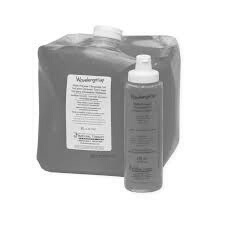Ultrasound has been used as a therapeutic modality since the early 1930’s but it was not until a proliferation of commercially available ultrasonic units in the early 1950s that physiotherapists utilised its soft tissue heating effects. So popular was the therapy that it began almost ubiquitous in the physiotherapy treatment of soft tissue injuries. Research in the later period of century brought into question the therapeutic value of ultrasound, but at the same time as its use began to decline, real time ultrasound for assessment and biofeedback by physiotherapists began to expand.
Ultrasound is applied using a transducer that is in direct contact with the patient’s skin. A gel is used on all surfaces of the transducer to reduce friction and assist transmission of the ultrasonic waves into the body. The gel is usually composed of propylene glycol, water and occasionally a dye. It is usually clear and thick, and a little bit sticky so that it doesn’t drip or run off the body.
Prior to the creation of gel, to be effective ultrasound had to be conducted underwater. Patients would have their body part immersed in water baths and the transducer placed near to the skin under the surface. This added time and complications to the process, so a water-filled plastic bag was used between the machine head and the patient’s skin wherever possible.
The creation of the gel made ultrasound therapy a much more convenient tool and it was adopted almost overnight.
Description provided by Glenn Ruscoe of Australia
References
Fyfe, M and Bullock, M. 1985. Therapeutic ultrasound: Some historical background and development in knowledge of its effect on healing. The Australian Journal of Physiotherapy, 31 (6), 220-224.
Miller, D, et al. 2013. Overview of therapeutic ultrasound applications and safety considerations. Journal of Ultrasound in Medicine, 31(4), 623-634.

